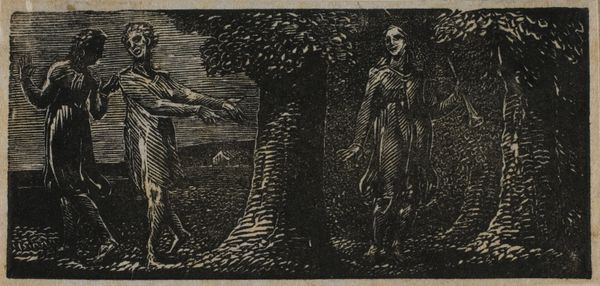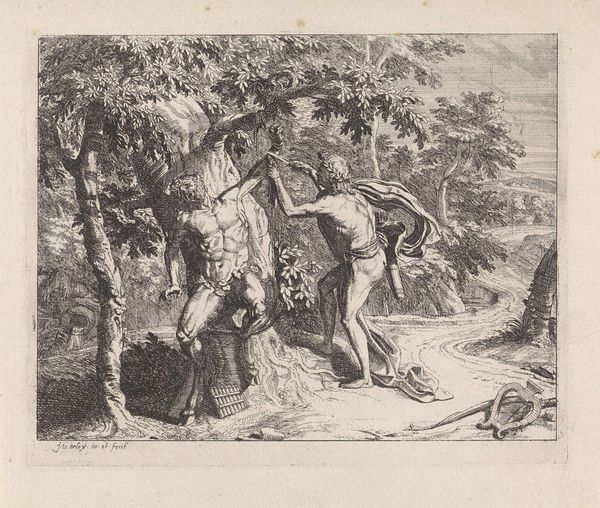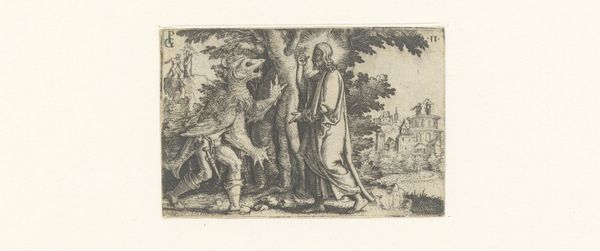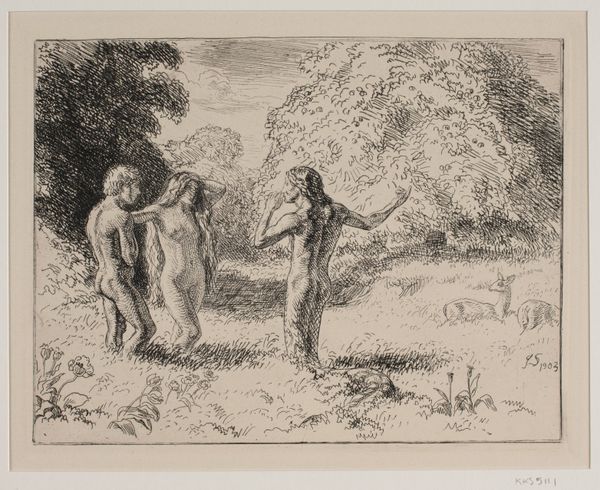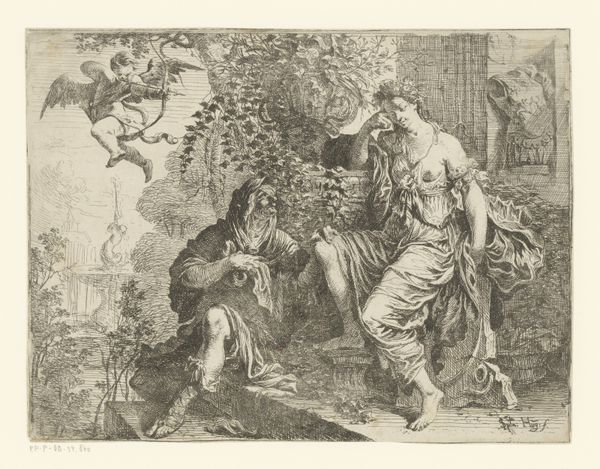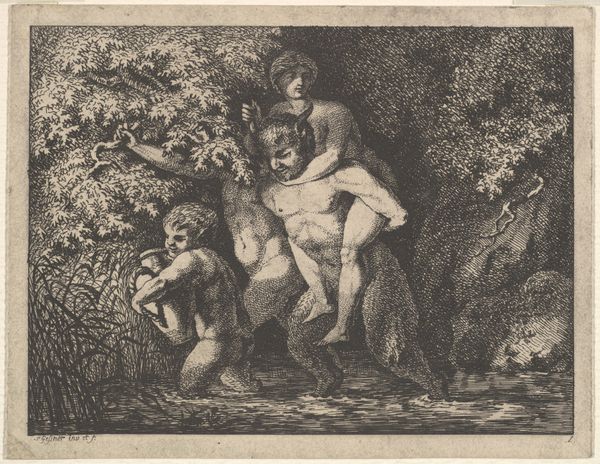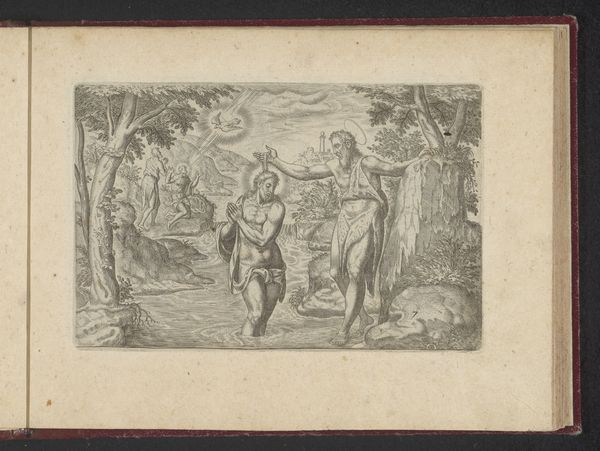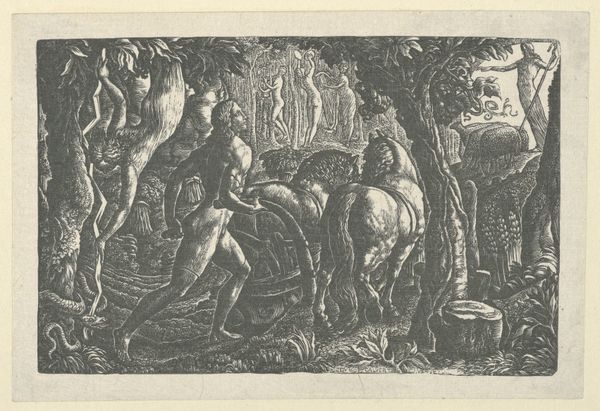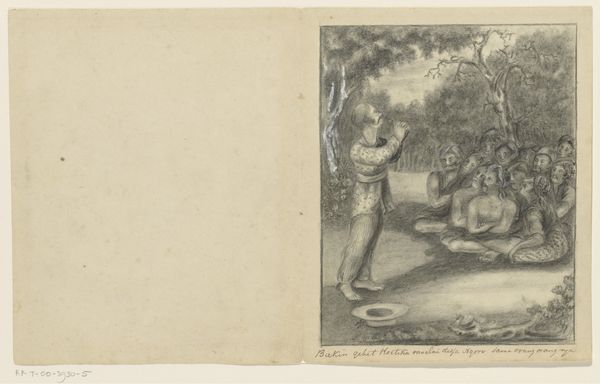
Colinet Mocked by Two Boys, from Thornton's "Pastorals of Virgil" 1821
0:00
0:00
drawing, print, engraving
#
drawing
# print
#
landscape
#
figuration
#
history-painting
#
engraving
Dimensions: block: 1 7/16 x 3 1/8 in. (3.7 x 7.9 cm)
Copyright: Public Domain
Curator: This is William Blake's engraving, "Colinet Mocked by Two Boys, from Thornton's 'Pastorals of Virgil,'" created in 1821. It's currently held at the Metropolitan Museum of Art. Editor: The scene has a rather unsettling quality to it. There's something about the sharp contrasts and the stylized figures that makes me feel uneasy, despite the seemingly pastoral setting. It is very rough hewn isn't it? Curator: That's partly attributable to Blake's radical approach to illustration, rejecting the prevailing Neoclassical aesthetics of the time. Blake sought to express a deeper, almost mystical understanding of Virgil’s text through an emphasis on stark contrasts and a more folk-art sensibility. These engravings for Thornton reflect Blake's social critique of elitism and the exploitation of labor, the mockery itself becoming symbolic of power dynamics. Editor: The raw quality of the engraving really does emphasize that. Look at the heavy lines, the way the figures are almost crudely rendered, it feels almost purposefully defiant of refined taste. Were these illustrations not well received at the time because of their execution? Curator: Indeed, the illustrations were widely criticized during that period. Blake aimed to disrupt conventions and connect directly with a simpler, uncorrupted mode of vision. We can think about this print in dialogue with contemporary discussions surrounding cultural appropriation and authenticity within Romanticism. Blake’s radical interpretations often led him into conflict with societal expectations, particularly regarding social hierarchies and accepted aesthetic standards. Editor: So it wasn't just about making art, but also about making a statement with his art. How the means by which art is produced reflects his ideological stand-point. Did this defiance influence his printing process itself? What about his choice of materials, compared with other more luxurious artworks from his time? Curator: Absolutely, it did influence his methods profoundly. By using materials accessible to a broader demographic, Blake challenged the art establishment and engaged with wider audiences, underscoring ideas that art should not exist solely within an exclusive realm. And of course Blake would also continue using this exact same visual language in later works. Editor: Ultimately, Blake’s art transcends his medium through the powerful connection between materiality and messaging, offering both critical insights into societal constructs and aesthetic rebellions of convention, creating artworks far greater than they at first may seem. Curator: Precisely. Blake utilized visual storytelling to dismantle notions of social superiority while fostering intellectual discourse concerning themes of authenticity, justice, and inclusivity that continue to remain applicable today.
Comments
No comments
Be the first to comment and join the conversation on the ultimate creative platform.
